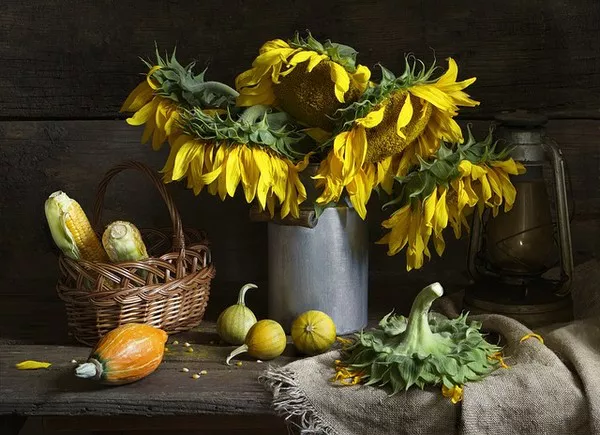Sunflowers (Helianthus annuus) are stunning and vibrant plants that add a touch of cheerfulness to any garden. Their tall, bright yellow blooms and unique beauty make them a popular choice for gardeners. However, just like any other plant, sunflowers have their preferences and aversions when it comes to their neighbors in the garden. In this informative gardening guide, we will explore five aspects of what not to plant with sunflowers, ensuring that you create an ideal environment for these sun-loving beauties to thrive.
Tall and Shade-Casting Plants
Sunflowers are known for their love of sunlight. Planting them alongside tall and shade-casting plants can hinder their growth and development. Such towering plants may obstruct the sunflower’s access to direct sunlight, preventing them from reaching their full height potential and reducing the size and vibrancy of their flowers.
1. Avoiding Trees and Large Shrubs
When choosing a spot for your sunflower patch, avoid planting them near large trees or shrubs with dense foliage. These woody plants can create too much shade and compete for sunlight, leading to stunted sunflower growth.
2. Opt for Low-Growing Neighbors
Instead, opt for low-growing plants or those with delicate foliage that won’t cast excessive shade. Marigolds, zinnias, and petunias make excellent companions for sunflowers as they won’t overshadow them and can even complement their beauty.
Competitive Plants
Sunflowers may look robust, but they are not fond of sharing resources with highly competitive plants. Certain plants tend to consume a lot of water and nutrients, leaving little for the sunflowers to thrive.
1. Steer Clear of Invasive Species
Avoid planting sunflowers near invasive species like mint, bindweed, or kudzu. These aggressive plants can quickly overrun your sunflower bed, creating an unbalanced and chaotic environment.
2. Harmonious Plant Pairings
Instead, choose plants that have similar water and nutrient requirements as sunflowers. Nasturtiums, cosmos, and larkspurs are some examples of harmonious companions that won’t outcompete the sunflowers.
Soil Incompatibility
The soil in which you grow sunflowers plays a crucial role in their overall health and growth. Certain plants have specific soil requirements that might not align well with sunflowers.
1. Avoid Acid-Loving Plants
Sunflowers prefer slightly acidic to neutral soil, with a pH range of 6.0 to 7.5. Avoid planting them near acid-loving plants like azaleas or blueberries, as these plants require more acidic conditions.
2. Consider Neutral Soil Plants
Instead, consider planting sunflowers alongside plants that thrive in neutral soil conditions. Vegetables like carrots, radishes, and lettuce can make suitable companions, providing a diverse and attractive garden setting.
Pests and Diseases
Just like any garden plant, sunflowers are susceptible to pests and diseases. Some plants may attract harmful insects or host diseases that could spread to the sunflowers.
1. Repel Harmful Insects
Avoid planting sunflowers near plants that attract pests like aphids, mites, or caterpillars. These insects can cause damage to the sunflower’s leaves and flowers.
2. Plant Pest-Repellent Herbs
Instead, consider planting pest-repellent herbs such as lavender, rosemary, or basil around your sunflowers. These aromatic plants can help deter harmful insects while adding a delightful fragrance to your garden.
Watering Considerations
Sunflowers have moderate water requirements and may not fare well if paired with plants that demand excessive watering or have shallow root systems.
1. Separate High-Water Plants
Avoid planting sunflowers near water-loving plants like watercress or irises, as these plants may require more frequent and copious watering, leaving the sunflowers thirsty.
2 Match Watering Needs
Instead, choose plants with similar watering needs to create a harmonious and balanced garden. Marigolds, cosmos, and coreopsis are examples of flowers that can thrive with similar watering schedules as sunflowers.
Conclusion
By understanding what not to plant with sunflowers, you can create an optimal garden environment for these stunning beauties to flourish. Avoid tall, shade-casting plants, competitive species, and incompatible neighbors. Consider the soil preferences and potential pest problems when selecting companion plants. By following these gardening guidelines, you’ll ensure that your sunflowers remain the stars of your garden, radiating their brilliance throughout the growing season. Happy gardening!


